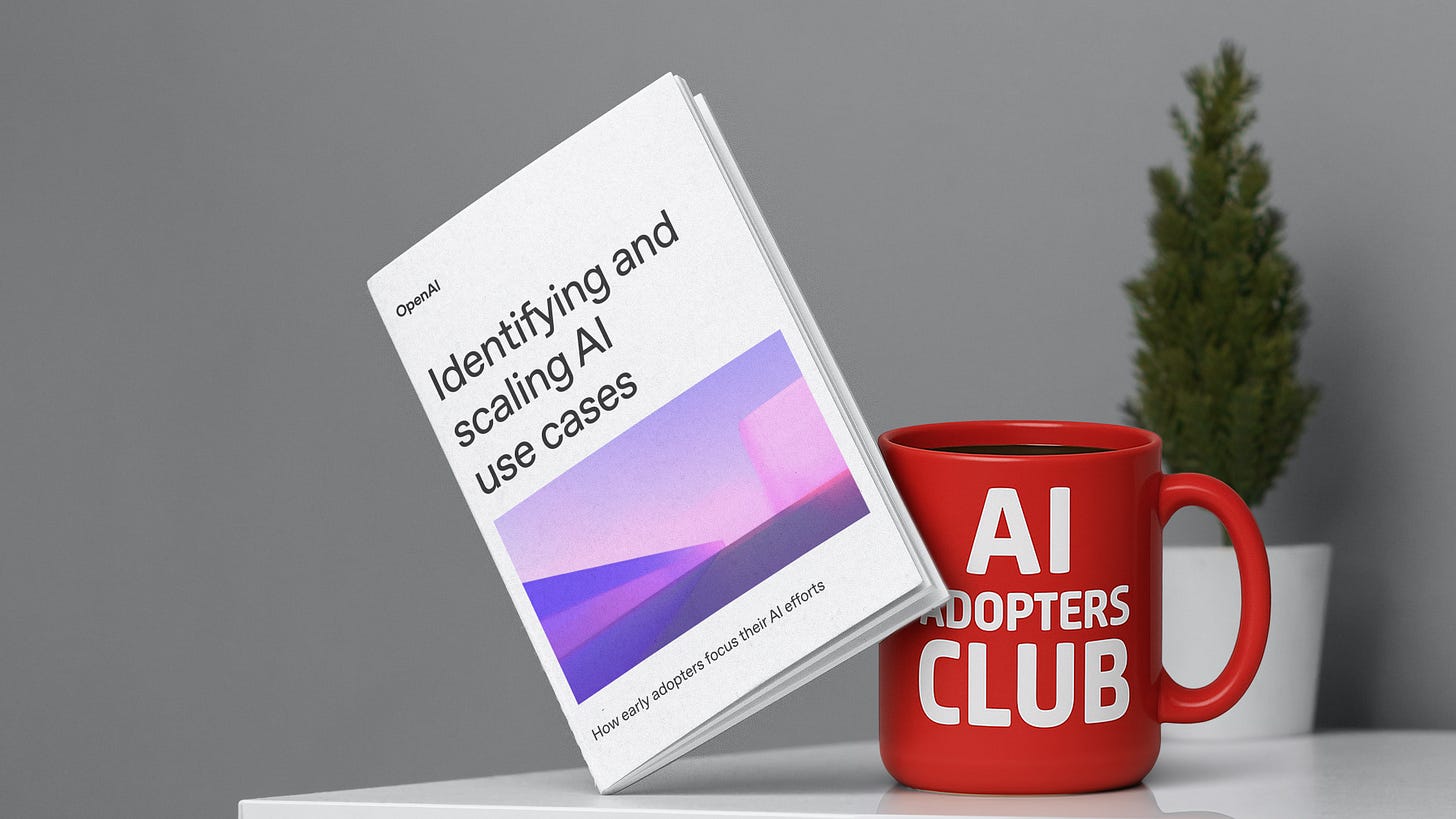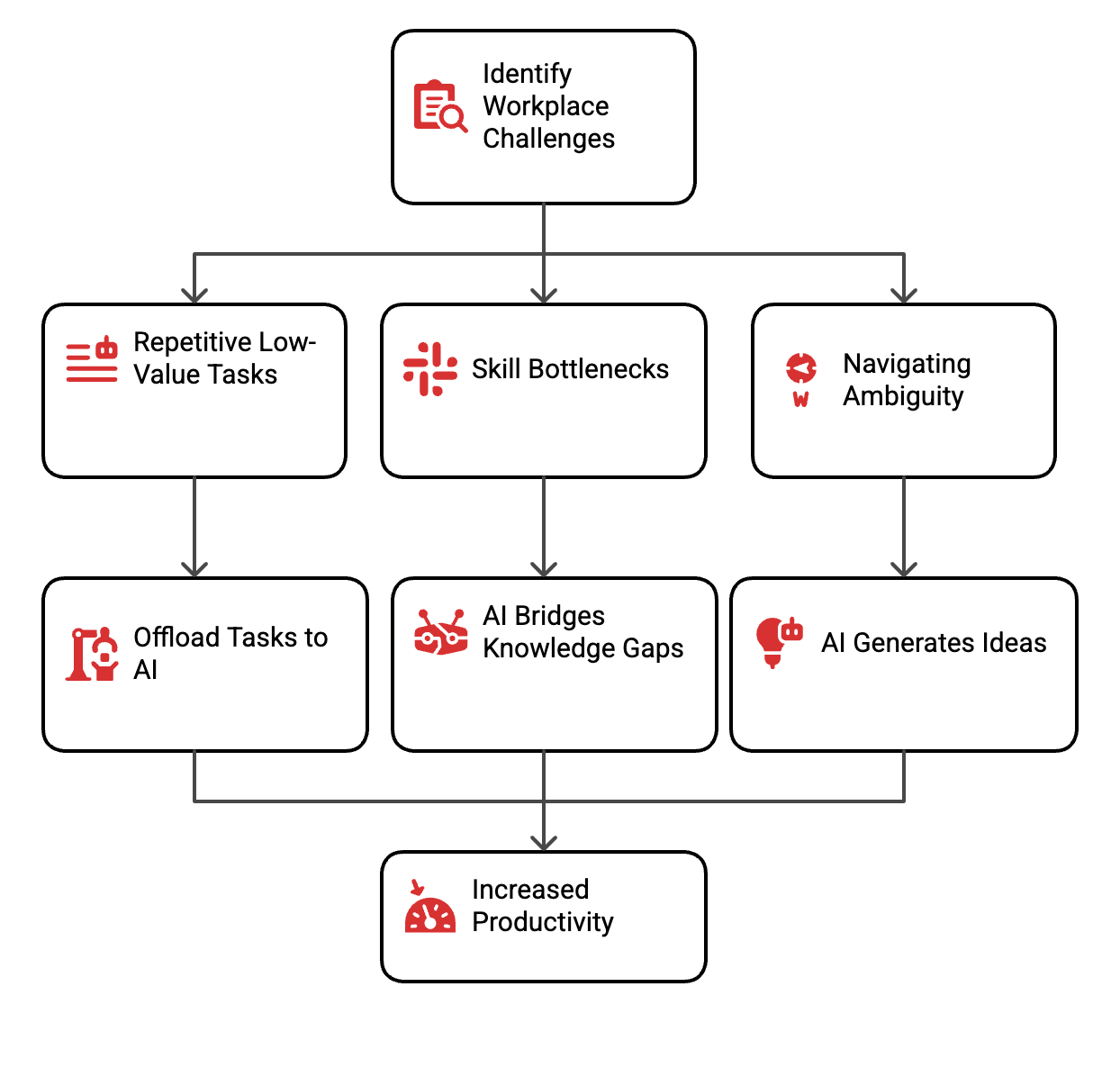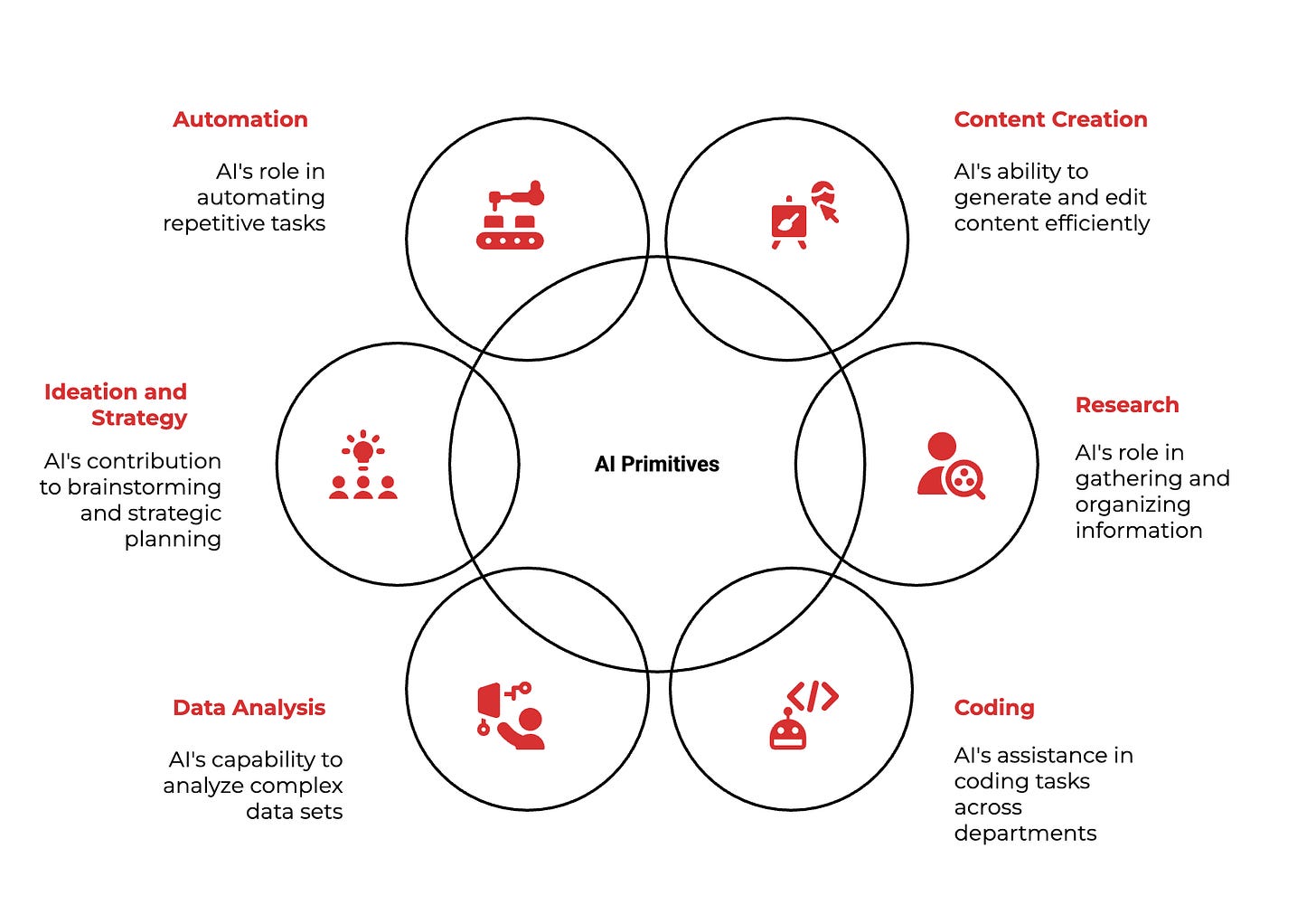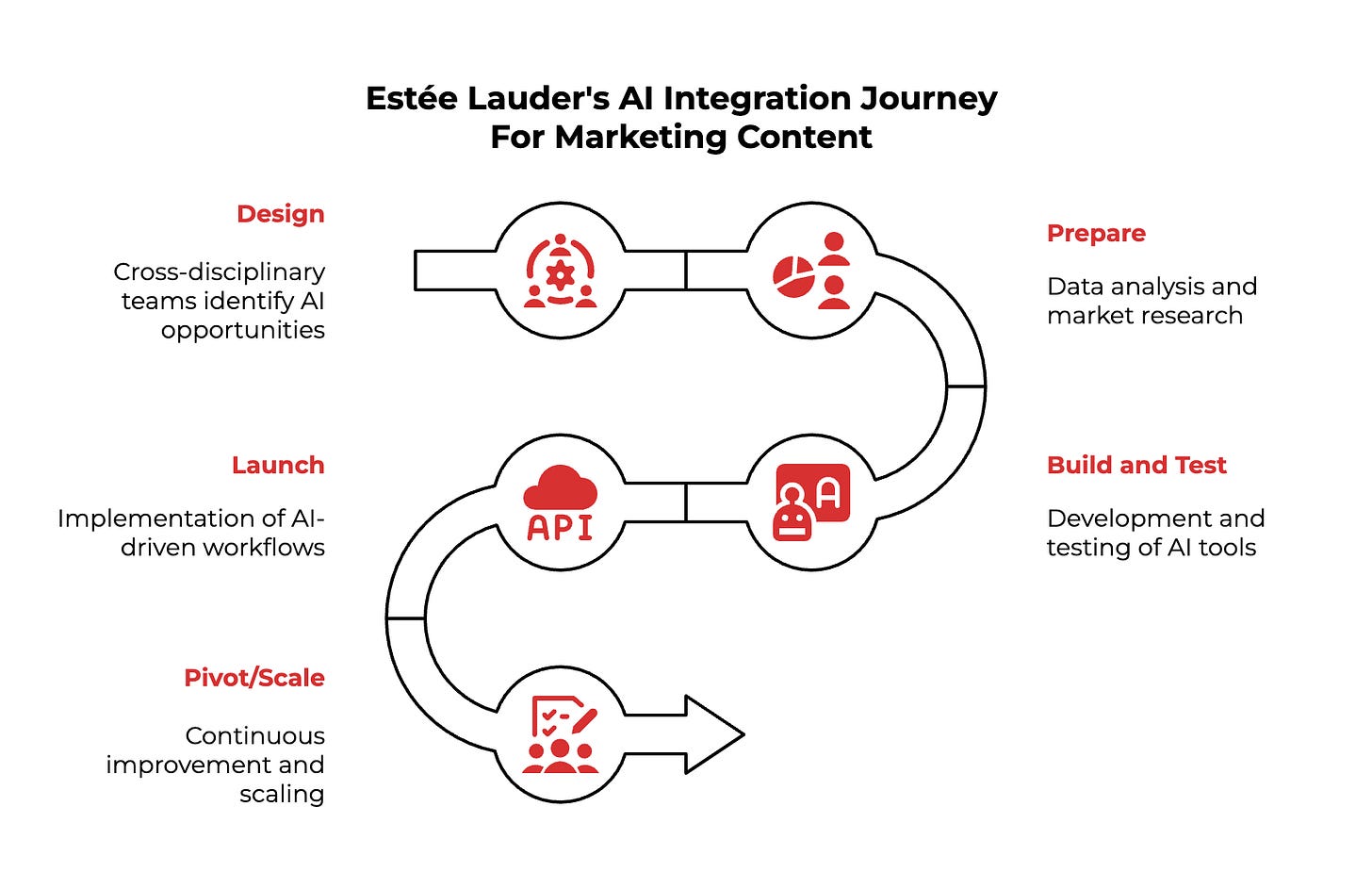3 Key Findings from OpenAI's Blueprint for AI Implementation
OpenAI's blueprint reveals how top organizations identify and scale productive AI use cases
Hey Adopter,
OpenAI just dropped their blueprint for identifying and scaling AI use cases, and it exposes the uncomfortable truth about AI implementation: most companies are simply doing it wrong.
While everyone else is obsessing over which AI model has the most parameters or chasing theoretical use cases, the report reveals that successful companies are taking a fundamentally different approach. They're focusing on practical, high-impact applications that deliver immediate value.
The numbers tell the story: AI leaders see 1.5x faster revenue growth and 1.6x higher shareholder returns than competitors. Yet a staggering 99% of companies believe their AI investments haven't reached full maturity.
Let's cut through the hype and focus on what the report actually reveals.
Three Key Opportunity Areas Where AI Creates Immediate Value
The report identifies three specific workplace challenges where AI creates immediate impact:
1. Repetitive Low-Value Tasks
Every job is packed with tedious, manual tasks that drain productivity and employee satisfaction. OpenAI highlights how companies are offloading these tasks to AI, with impressive results.
Claire Vo, Launch Darkly's Chief Product Officer, created what she calls an "Anti To-Do List" of tasks she no longer handles personally. It includes monitoring KPIs, tracking competitors, and sharing customer stories over Slack. Her advice? "Every time I do something I find annoying, I ask myself, how can I not have to do this again?"
2. Skill Bottlenecks
Work often stalls when employees hit knowledge barriers that require expert input. The report shows how AI bridges these gaps, letting teams make progress without waiting for specialized assistance.
A compelling example from the report shows product managers using AI to create interactive prototypes without waiting for design or engineering resources, significantly accelerating development cycles.
3. Navigating Ambiguity
Knowledge work involves ambiguity that can paralyze progress. OpenAI found teams using AI as a catalyst to generate ideas, analyze data, and propose next steps when the path forward isn't clear.
Marketing teams at several companies mentioned in the report use AI to brainstorm campaign concepts, analyze audience data, and find connections between seemingly unrelated market trends.
The Six AI "Primitives" Every Department Should Master
After analyzing over 600 use cases, OpenAI discovered most successful implementations fall into six fundamental categories that apply across all departments:
1. Content Creation
From summarizing sales calls to generating strategy documents, AI excels at creating, editing, and translating content. Promega, the life sciences company, saved 135 hours in just six months using AI for first-draft email campaigns.
2. Research
Teams use AI to investigate new concepts, search for competitive data, and analyze comprehensive information sets. The report highlights how AI's ability to follow detailed instructions for information organization makes it an exceptional research assistant.
3. Coding
Not just for software engineers. Finance teams are building Python scripts to automate the monthly close, and marketing teams are creating data visualizations without traditional coding skills. Tinder's engineers found they were tackling previously deprioritized tasks because "with ChatGPT at my side, I know it's going to be easier."
4. Data Analysis
AI helps anyone work with complex spreadsheet data without advanced Excel or SQL skills. Poshmark used AI to generate Python code that reconciles millions of spreadsheet rows, generating executive reports that previously required hours of manual effort.
5. Ideation and Strategy
Teams use AI to structure documents, troubleshoot strategies, and simulate scenarios. Match Group is experimenting with using AI to run focus group simulations for product usability by uploading wireframes and having AI mimic specific user personas.
6. Automation
Many companies identified repeatable tasks and built AI systems to handle them. BBVA's Credit Analysis Pro GPT helps risk analysts accelerate assessments by automatically pulling data from annual reports, ESG assessments, and other sources.
How to Prioritize: The Impact/Effort Framework
With so many potential use cases, the challenge shifts from discovery to prioritization. The report introduces a simple but powerful Impact/Effort Framework for evaluating opportunities:
High ROI Focus: Quick wins with strong impact and low effort. Example: Tinder's GPT that democratizes access to their Command Line Interface
Self-Service: Low-effort projects with individual impact. Example: Financial advisors at Morgan Stanley using AI to summarize market analyses
High-Value/High-Effort: Transformational but resource-intensive projects. Example: Indeed's automated job recommendation explainer that increased applications by 20%
High-Effort/Low-Impact: Projects to deprioritize or reconsider later as AI capabilities advance
The report notes that 62% of AI's value lies in core business functions, making this prioritization process essential for maximizing returns on AI investments.
Moving Beyond Tasks to Workflow Transformation
While most teams start with discrete tasks, the report shows how power users are evolving to embed AI across entire workflows. For example, a marketing team might use:
Deep research to understand market trends and opportunities
Data analysis to size the audience and estimate opportunity
Brainstorming on campaign strategy using voice mode
Content creation for messaging and copy
Automation of content localization and channel optimization
Estée Lauder built a repeatable GPT development process with cross-disciplinary teams to identify and implement these workflow transformations, following a five-step process: Design, Prepare, Build and Test, Launch, and Pivot/Scale.
Turning This Report Into Your Career Advantage
While most professionals approach AI haphazardly, this report gives you a structured way to become your company's AI implementation expert:
Map the opportunity landscape: Identify the repetitive tasks, skill bottlenecks, and ambiguity challenges in your department
Master two primitives: Develop expertise in the two AI primitives most relevant to your role's pain points
Apply the Impact/Effort Framework: Present use cases to leadership using this lens to demonstrate strategic thinking
Think in workflows, not tasks: While others focus on discrete tasks, differentiate yourself by mapping entire departmental workflows that can be transformed
As Erik Brynjolfsson from Stanford notes in the report: "This is a time when you should be getting benefits [from AI] and hope that your competitors are just playing around and experimenting."
The same applies to your career. While others experiment, you can be delivering measurable results.
Adapt & Create,
Kamil






